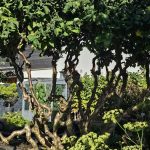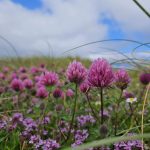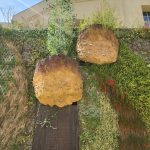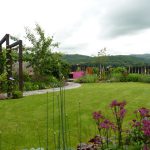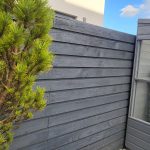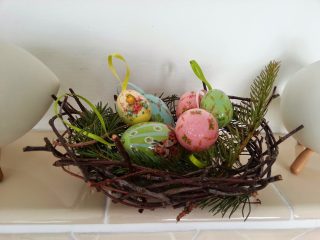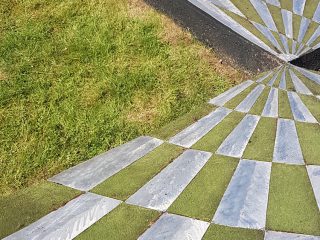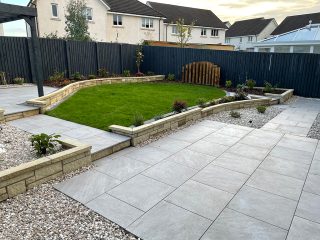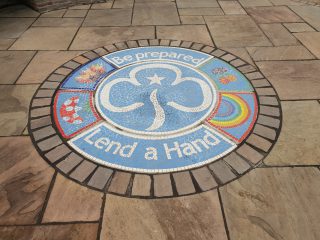Hop To It: Save The Frogs Day 2016
Monday, 25 April 2016
This Saturday, 30th April 2016, is Save The Frogs Day. So, as a keen wildlife gardener I have some great tips on pond dipping and some froggy facts about midgies, drinking water and much more…
Last weekend, I visited Jupiter Urban Wildlife Centre in Grangemouth. If you haven’t been already, you MUST go as it is really awesome. Partly because my clever M&D redesigned the gardens (they are def worth a visit and one is even made from old rubbish!) But mostly ‘cos they are cool people there, who do a wonderful job encouraging wildlife in the middle of an industrial estate and they let you borrow all sorts of kit as well as giving you sheets telling you what to do.
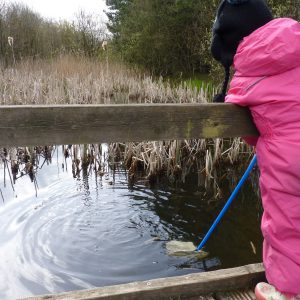
Perfecting my “Figure of 8” motion at Jupiter
I took Tilda along for a visit on Saturday as she hasn’t been there before and to show her how to go pond dipping. For pond dipping you will need:
- A shallow tray, preferably a light colour so you can easily see what you find
- A magnifying pot or glass so you can get a close up view of your little critters.
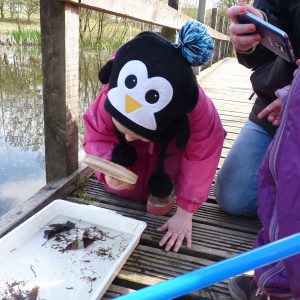
Inspecting my find with my Bigjigs magnifying glass
How to pond dip
- Ask an adult to fill your tray with some pond water
- Gently put your net in the water and move it in a figure of eight motion for about 20 seconds
- Gently empty the contents of your net into your tray
- You will often find more pond life around the plants in the pond as they like to shelter there
- Never stretch and always make sure you are comfortable when you are “fishing”
- Always take a responsible adult with you when you go pond dipping
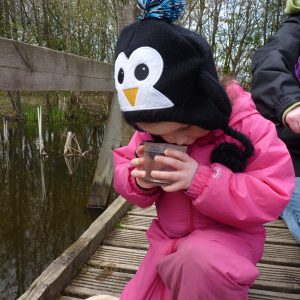
The magnifier is great for seeing pond-life close up
When we went pond dipping we found:
- Water snails
- Damselfly nymphs
- Lesser water boatmen
- An ickle minnow
I had hoped to find some frog spawn or tadpoles but there were none to be seen. Luckily we have a tank full of tadpoles at our nursery. We had collected frog spawn and we have already seen it turn into tadpoles. I can’t wait to see them turn into frogs!
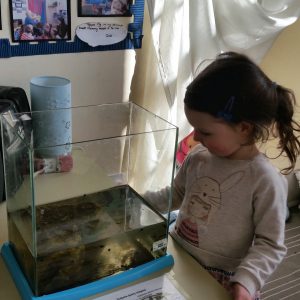
So, why are frogs so important?
Well, here are few quick facts:
- Frog spawn tastes awful (so I am told) thus protecting the eggs from being eaten by predators
- Frogs lay up to 4000 at one time (that’s a lot of brothers and sisters!)
- Amphibian means two lives
- Our froggy numbers are declining really fast
- Nearly 1/3 of the world’s amphibians are threatened with extinction
- We need frogs to keep our eco-system stable
- Frogs eat mosquitoes (or more importantly for us in Scotland, midgies!!)
- Frogs help in medical advances
- Frogs are food for birds
- Tadpoles help filter our drinking water
- Scientists have found frog fossils dating back over 140 million years ago (almost as old as Daddy!)
So, what can you do to help save the frogs?
- Pop over to Save The Frogs to make a donation or read about other ways to help such as volunteering
- Support organisations such as the Scottish Wildlife Trust who run Jupiter Urban Wildlife Centre
- Don’t eat frog’s legs (to be honest that one is pretty easy for me, I mean, really, would you???)
- Don’t use pesticides (we very much recommend organic gardening anyway)
- Introduce a small frog pond into your garden or somewhere in the local community.
That’s all from me. Ribbit!
Lulu xx
Prices correct at time of publication
